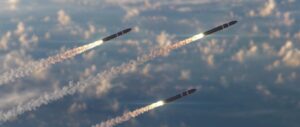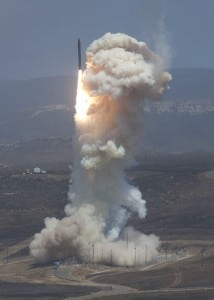The director of the Missile Defense Agency (MDA) said he supports developing an East Coast Ground-based Midcourse Defense (GMD) site, but it would take time and could affect the amount of Next Generation Interceptors (NGIs) the Pentagon will buy.
During an April 18 hearing of the House Armed Services’ strategic forces subcommittee Rep. Elise Stefanik (R-N.Y.) pressed Vice Adm. Jon Hill if he agrees that Fort Drum as a potential third GMD site is a good idea and what factors into proceeding forward.

“When it comes to defense, geography is very meaningful, and our ability to expand the battlespace for something like a Next Generation Interceptor, that is exactly what the location does and what it does provide. We will often talk about shoot-assess-shoot. That means getting a shot in early so if you’re geographically dispersed and you have a third sight you have the ability to engage early and engage again after you’ve assessed whether or not you’ve hit the first time. So there’s a compelling need there that we continue to watch as the threat increases.”
Previously, Stefanik pressed Army Gen. Mark Milley, Chairman of the Joint Chiefs of Staff, during a March 29 hearing on the timeline and utility of Fort Drum as a third missile defense site.
“I don’t think a timeline has actually been established…You’re looking at probably 20 to 40 silos, something like that, and then the missiles to go with it. It would probably take a decade to put that in, it would take billions [of dollars], I don’t know exact cost figures but it’d take billions. The question is it strategically worthwhile,” Milley said.
“I personally think, yes, because we have a missile threat from North Korea but we have an arrayed system of sensors in the Western Pacific all the way to California. And we’ve got missile capabilities that can engage North Korea… But Iran, if they were to develop the ICBM-level of missiles, which they haven’t yet, but if they do…and if they were to then develop a nuclear weapon to put on top of that, that’s where it becomes important,” he continued.
Milley added that “I personally think developing those systems on the East Coast would be helpful and it would further enhance the protection of the United States.”
Hill said he thinks Iran is maturing ICBM technology via space launch vehicles “as a ruse” and interpreted Milley’s comments as “the more defenses you have, the better. It is a key part of deterrence.”
Going forward, Hill said the specific locations for a third GMD site matter to get the shoot-assess-shoot capability and what the challenges are geographically.

‘The next steps generally involve going in and doing more invasive work on the areas that we might be considering. So for this Fort Drum [site], we would want to go determine how hard would it be to build there? And then you have the other discussions about well, how many silos would you require? What are the timelines? What will we do with the NGI production line? Because to me, that would be the best military advice on what to plan for would be the Next Generation Interceptor, since we will have at least one production line, maybe more depending on the decisions that are made.”
During the hearing, Hill confirmed the NGI program was made flexible enough to allow two NGI builders at once if policymakers choose that option (Defense Daily, April 21).
Northrop Grumman [NOC] and Lockheed Martin [LMT] were first selected for initial technology development and risk reduction work on NGI in 2021. NDA plans the competition to at least run through the Critical Design Review phase (Defense Daily, March 21, 2021).
The Defense Department is currently planning to procure upward of 20 NGIs for the Fort Greely, Alaska GMD site, where 20 additional silos were previously built. GMD currently consists of 44 older interceptors based at Fort Greely and Vandenberg Space Force Base, Calif.
Last year, Hill told a Senate panel the Pentagon plans to decide precisely how many NGIs it wants to procure following the Preliminary Design Review in 2024 (Defense Daily, May, 23, 2022).